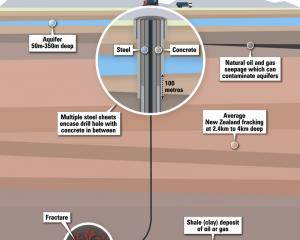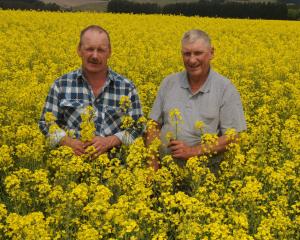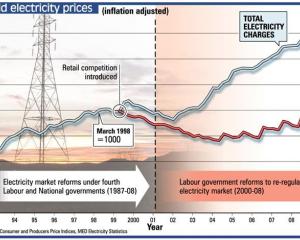Meridian Energy says its proposed Mokihinui hydro-dam would generate more electricity than previously anticipated.
A resource consent hearing for the project started in Westport today, and opponents outnumber supporters by more than two to one.
Meridian's lawyer, Stephen Christensen, said the dam would have an estimated peak electricity output of 80 megawatts (MW) to 100MW. Previously, Meridian had estimated the dam would have a peak output of 65MW to 85MW.
The West Coast's power demand is expected to reach 75MW this year and to peak at about 100MW in 2011.
Mr Christensen said the initial dam design had included three turbines, with two main turbines capable of generating 40MW and a smaller turbine designed to operate mainly at minimum flow periods.
Meridian had decided the smaller turbine could use water that would spill over the dam during peak flow periods. Simply put, the opportunity to use the proposed smaller turbine at high flow as well, made good sense, Mr Christensen said.
The smaller turbine could generate about 13MW. The alteration would not harm the environment or affect flow levels downstream of the dam, he said.
The three turbines would produce enough electricity for 45,000 to 51,000 average households. During the whitebait season lake inflow levels and water discharge levels would be matched as closely as possible, to avoid disrupting whitebait migrating up the river, Mr Christensen said.
When the dam was built, trees between 92m and 102m above sea level would be cut back or removed for navigational safety and the appearance of the landscape. This would ensure no trees sticking up more than 5m below the water line when the site was flooded.
The exact route for the 28km transmission line was still being determined.
Mr Christensen said the Mokihinui was the only river in the district suitable for large-scale hydro-generation. Other main rivers in the area had protected status or insufficient flow. The Mokihinui did not have elevated protection status. However, one area of the South Branch had been identified as a priority site due to the presence of native blue ducks.
The relative inaccessibility of the river meant it had less value than the Buller and Karamea rivers, which received significantly more visitors. He said there was no road access beyond the bottom of the gorge, and foot access was made difficult by the poor quality of the existing track.
The resource consent hearings will take about six weeks, including breaks. About 30 people turned up for today's opening.
The West Coast Regional Council has set up a webpage to inform the public about the process. It includes all the submissions, as well as the application, contacts and hearing information at www.wcrc.govt.nz/mokihinui.index.htm
Meridian applied to the council for 34 resource consents for the dam in December last year. The proposal includes building a hydro dam and power station 3km upstream of Seddonville. The 85m-high dam would create a 14km-long lake.
The transmission line is expected to run southwards across the Stockton plateau to a new substation to be located at Cedar Creek in the upper Waimangaroa valley. If the dam passes the consent stage, it will take three years to build.





